Hidden Messages (INT-M2-02-EN)
Platform Administrator
Objectives
- detect verbal and nonverbal ways that media used to affect readers' emotional attitude towards foreigners/other nationalities or other vulnerable or underestimated groups;
- recognize parts in the text that enhance fear and anger;
- become acquainted with the most commonly used strategy / word phrase with which media gain our attention
- distinguish subjective arguments from objective.
Target group(s)
-
Teachers, librarians, youth counsellors, sport-trainers, first liners, students
Description
PART 1
In the first activity, “Find the lines to read between,” participants work individually or in a small group.
- Option 1: all of them work on the same types of media (for example: magazines)
- Optoin 2: groups work on diffrent types of media (TV, radio shows, video games, websides, apps, …)
Facilitator gives instructions for first activity. Each participant answers to all four questions. Meanwhile, teacher collect answers and present them to all in interactive board/ flipchart/ PowerPoint presentation.
Questions:
- Q 1:What construction elements on the front page tell me what is intended to be looked at first? (headlines, pictures, top of page, first story below the fold, extra-wide column)
- Q2 :What are the construction elements that are intended to encourage me to open the paper/continue with listening, watching or playing game? (index, promos for other sections, stories that continue on other pages/parts, references to related articles in another section).
- Q3: How do I feel after reading/listening/playing this? (fear, despair, guilt, anger, uncertainty, incompleteness, envy, desire for having more, feeling that someone is going to take me, what belong just to me, ….).
- Q4: Does titles/images/words influence on my present opinion. How?
The results of the research in the classroom teacher connects with the ida that media are constructed on an obvious level (Annex 1).
Activity 2: Where they get me?
Each participant mark words/titles and images, which have :
- attracted his attention and
- have had an impact on the change in the way of thinking.
Activity 3: Let's read again
With use of Critical reading structure ( Annex 2) they go trought the same text/video and report about findings.
Final Activity or task for home: Summary on boards
Groups devide into 4 or 5 and design e-class posters on Glogster or any other graphic App , which are going to present the most obvious construct elements used in media with case studies (op. student can use their own notes from Acticity 2).
PART 2
»Decrypt hidden« gives participants opportinity to become acquainted with spotting media techniques and their target audiences (Annex 3) In the third activity students learn how to differ objective arguments from subjective.
The last activity gives the opportunity for self-reflection: what they really know about topic and what they decide to believe to be true.
Task for work in pair or in a small group. Discussion should be lead by facilitator. Introducution part (Annex 3) and discussion about each techniques aim.
Activity 1: Participants need to choose 2 texts and identify purposes, the tehniques and the target audiences for each of the texts.
Avtivity 2: In subsequent activities, participants are asked to find their own samples of the texts.
Activity 3: Participants compare content of magazines to the content of a typical textbook chapter or text of origins. They need to answer:
- How and where they differ?
- Where are they similar?
Activitiy 4: Write down on your flip what you certainly know e.g. about foreigners, who live in your country? ( write what they certainly know, not think.)
Now read the article (article should be in connection with someone or something, that involve them emotionaly). Look at your answers again. Would you like to add something?
Self-reflecsion questions:
- How do I feel after I read that?
- What thoughts I am thinking right now?
- Is this 100 % true? Where can I check the veracity of the information?
- Where can I get more informations?
Aim of last task is to test, how text influenced on ones emotions and how emotions influence on their thoughts and consequent behaviour.
The last two questions are part of critical evaluating, which will teach participant how to establish emotional distance and to formulate an opinion on the basis of verified facts.
Material
- Video games, TV, radio, newspapers and magazines
- Copies of Annex 1, 2 and 3
- Cards with case studies and tasks
- Discussion board/ flipchart
Methods
- Analysis
- Debate and discussion
- Critical evaluation
Advice for Facilitators
Exercise can be done individually or in small groups. Participants can be encouraged to bring media texts that they find outside the classroom and are connected with the theme. it would be helpful to have copies of other newspapers’ front pages, so there is a variety of texts to examine.
Sources
Chris M. Worsnop: Media Literacy Through Critical Thinking, teaching material, NW Media for Excellence in Media Literacy, Washington State Office of Superintendent of Public Instruction.
Handouts
Calendar
Announcements
- - There are no announcements -

